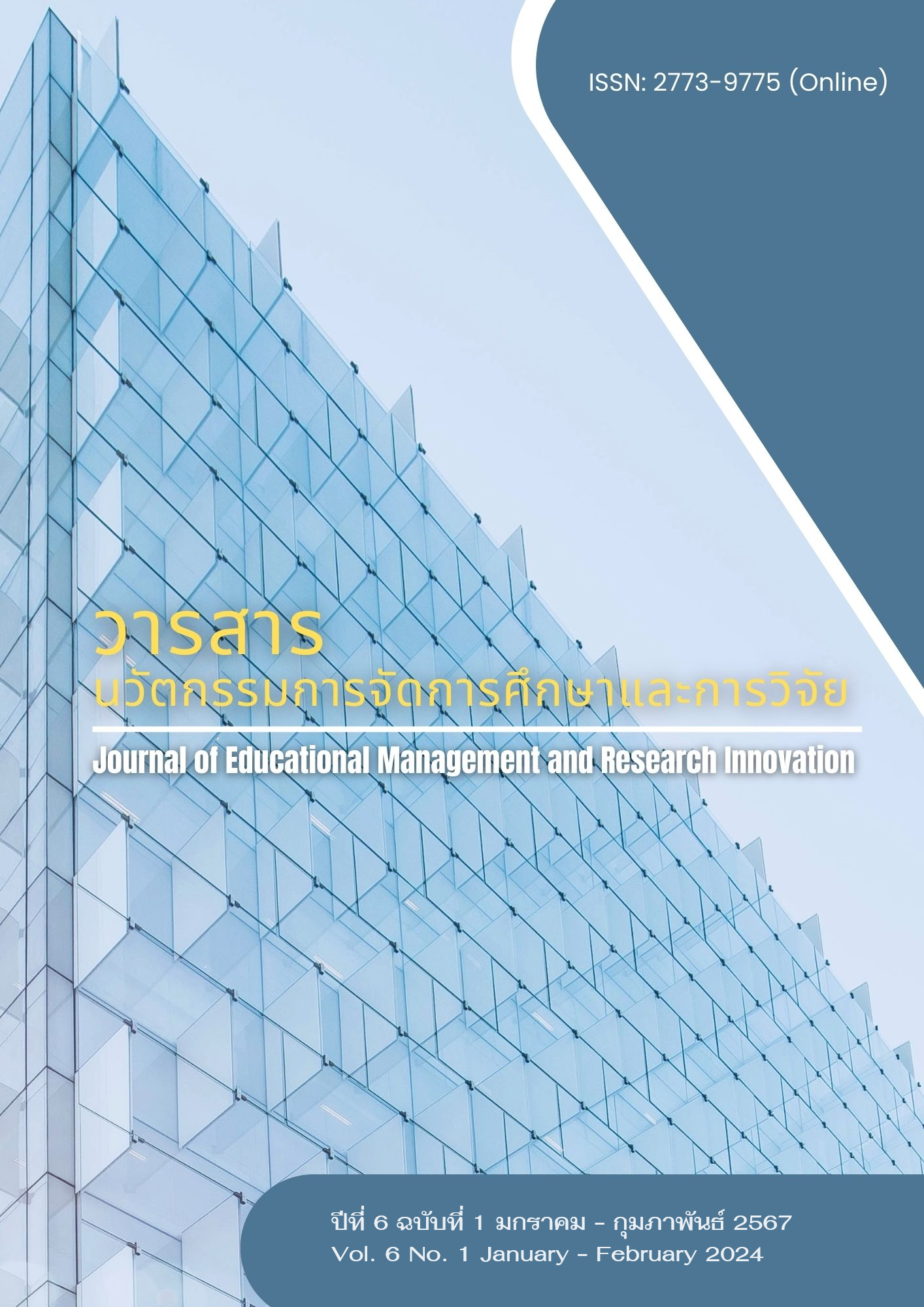การประยุกต์ใช้หลักสติเพื่อจัดการความโกรธของนักเรียนประถมศึกษาตอนปลาย โรงเรียนวัดศรีบุญเรือง เขตบางกะปิ กรุงเทพมหานคร
Main Article Content
บทคัดย่อ
การศึกษาวิจัยนี้ มีวัตถุประสงค์ 3 ประการ คือ 1) เพื่อศึกษาที่มาและสภาพปัญหาที่เกิดจากความโกรธ 2) เพื่อศึกษาการประยุกต์ใช้หลักสติเพื่อจัดการความโกรธ และ 3) เพื่อศึกษาเปรียบเทียบการประยุกต์ใช้หลักสติเพื่อจัดการความโกรธของนักเรียนประถมศึกษาตอนปลาย โรงเรียนวัดศรีบุญเรือง เขตบางกะปิ กรุงเทพมหานคร ผู้วิจัยใช้การศึกษาเชิงปริมาณ โดยรวบรวมข้อมูลจากกลุ่มตัวอย่างจำนวน 150 คน สถิติที่ใช้ในการวิเคราะห์ข้อมูลคือสถิติเชิงพรรณนา ได้แก่ ค่าความถี่ ค่าร้อยละ ค่าเฉลี่ย ส่วนเบี่ยงเบนมาตรฐาน และสถิติเชิงอนุมาน ได้แก่ ค่า t-test และ F-test ผลการวิจัยดังนี้
ที่มาหรือสาเหตุของความโกรธของนักเรียนประถมศึกษาตอนปลาย โรงเรียนวัดศรีบุญเรือง มีค่าเฉลี่ยอยู่ในระดับน้อย เมื่อพิจารณาเป็นรายด้านโดยเรียงลำดับค่าเฉลี่ยจากมากไปหาน้อย ได้ดังนี้คือ ด้านการใช้ชีวิตในโรงเรียน ด้านคุณภาพชีวิต และด้านความสัมพันธ์ส่วนบุคคล ส่วนสภาพปัญหาที่เกิดจากความโกรธของนักเรียน โรงเรียนวัดศรีบุญเรือง โดยรวมมีค่าเฉลี่ยในระดับปานกลาง เมื่อพิจารณาเป็นรายข้อโดยเรียงลำดับค่าเฉลี่ยจากมากไปหาน้อย 5 อันดับแรก ได้ดังนี้ 1) นักเรียนรู้สึกโมโหหรือโกรธง่าย 2) นักเรียนรู้สึกเบื่อง่าย 3) นักเรียนรู้สึกหงุดหงิดง่าย 4) นักเรียนรู้สึกรำคาญง่าย และ 5 นักเรียนรู้สึกไม่พอใจง่าย
การประยุกต์ใช้หลักสติในการจัดการความโกรธของนักเรียน โดยรวมมีค่าเฉลี่ยในระดับมาก และเมื่อพิจารณาเป็นรายด้านพบว่า นักเรียนประยุกต์ใช้หลักสติในการจัดการความโกรธอยู่ในระดับมากทุกด้าน โดยมีการประยุกต์ใช้หลักสติในด้านความสัมพันธ์ส่วนบุคคลมากสุด รองลงมาเป็นด้านคุณภาพชีวิต และด้านการใช้ชีวิตในโรงเรียน
การวิเคราะห์เปรียบเทียบค่าเฉลี่ยการประยุกต์ใช้หลักสติเพื่อจัดการความโกรธของนักเรียน พบว่า นักเรียนที่มีอายุต่างกัน มีการประยุกต์ใช้หลักสติเพื่อจัดการความโกรธแตกต่างกันอย่างมีนัยสำคัญทางสถิติที่ระดับ .05
Article Details

อนุญาตภายใต้เงื่อนไข Creative Commons Attribution-NonCommercial-NoDerivatives 4.0 International License.
เอกสารอ้างอิง
ปรียพร วิศาลบูรณ์, สุรัมภา รอดมณี, เนาวนิจ พึ่งจันทรเดช และ เบญญาภา ทนต์ประเสริฐเวช. (2566). จิตบำบัดตามแนวพุทธจิต: บทวิเคราะห์ในมิติทางการพยาบาล. วารสารสหวิทยาการมนุษยศาสตร์และสังคมศาสตร์, 6(1), 120-140.
พระพรหมคุณาภรณ์ (ป.อ. ปยุตฺโต). (2551). พุทธธรรม ฉบับปรับขยาย. (พิมพ์ครั้งที่ 11). กรุงเทพฯ: โรงพิมพ์มหาจุฬาลงกรณราชวิทยาลัย.
พระอรรถชาติ เดชดำรง. (2566). การแบ่งช่วงชั้นทางสังคม : มุมมองของศาสนาพราหมณ์-ฮินดู และพระพุทธศาสนา. วารสารนวัตกรรมการจัดการศึกษาและการวิจัย, 5(2), 481-492.
มหาจุฬาลงกรณราชวิทยาลัย. (2539). พระไตรปิฎกภาษาไทย ฉบับมหาจุฬาลงกรณราชวิทยาลัย. กรุงเทพฯ: โรงพิมพ์มหาจุฬาลงกรณราชวิทยาลัย.
แม่ชีสุดา โรจนอุทัย. (2561). การพัฒนาเชาวน์อารมณ์ของวัยรุ่นตามหลักพุทธธรรม.วารสารบัณฑิตศึกษาปริทรรศน์, 14(1), 13-25.
โยตะ ชัยวรมันกุล, พระครูโสภณวีรานุวัตร, สุพัฒน์ ชัยวรรณ์, สายน้ำผึ้ง รัตนงาม และ ธนัชพร เกตุคง. (2566). พุทธนวัตกรรมภาวนา 4 เพื่อเพิ่มพลังของผู้สูงอายุ อำเภอสามพราน จังหวัดนครปฐม. วารสารสหวิทยาการมนุษยศาสตร์และสังคมศาสตร์, 6(2), 611-625.
รุ่งรัตน์ สุวนาคกุล. (2562). การพัฒนาเทคนิคการปรับความคิดและพฤติกรรมเพื่อจัดการความโกรธของวัยรุ่นด้วยพุทธสันติวิธี. วารสารสันติศึกษาปริทรรศน์ มจร, 7(2), 407-423.
สุชา จันทร์เอม. (2539). จิตวิทยาทั่วไป. กรุงเทพฯ: ไทยวัฒนาพานิช.
สุพัตรา สุภาพ. (2541). สังคมไทยและวัฒนธรรมไทย ค่านิยม ครอบครัว ศาสนา ประเพณี. กรุงเทพฯ: ไทยวัฒนาพานิช.
Damnoen, P. S., Siri, P., Supattho, P. S., & Kaewwilai, K. (2021). The Development of Student Characteristics in According to the Nawaluk Framework of the Buddhist integration of Buddhapanya Sri Thawarawadee Buddhist College. Asia Pacific Journal of Religions and Cultures, 5(2), 126–135.
Klomkul, L., Damnoen, S., Sawasdee, U., & Wilairadtanakun, A. (2023). Network Development of Buddhist Communication Innovative Space For Media Literacy of Thai Youths. Journal of Namibian Studies: History Politics Culture, 35, 919-935.


